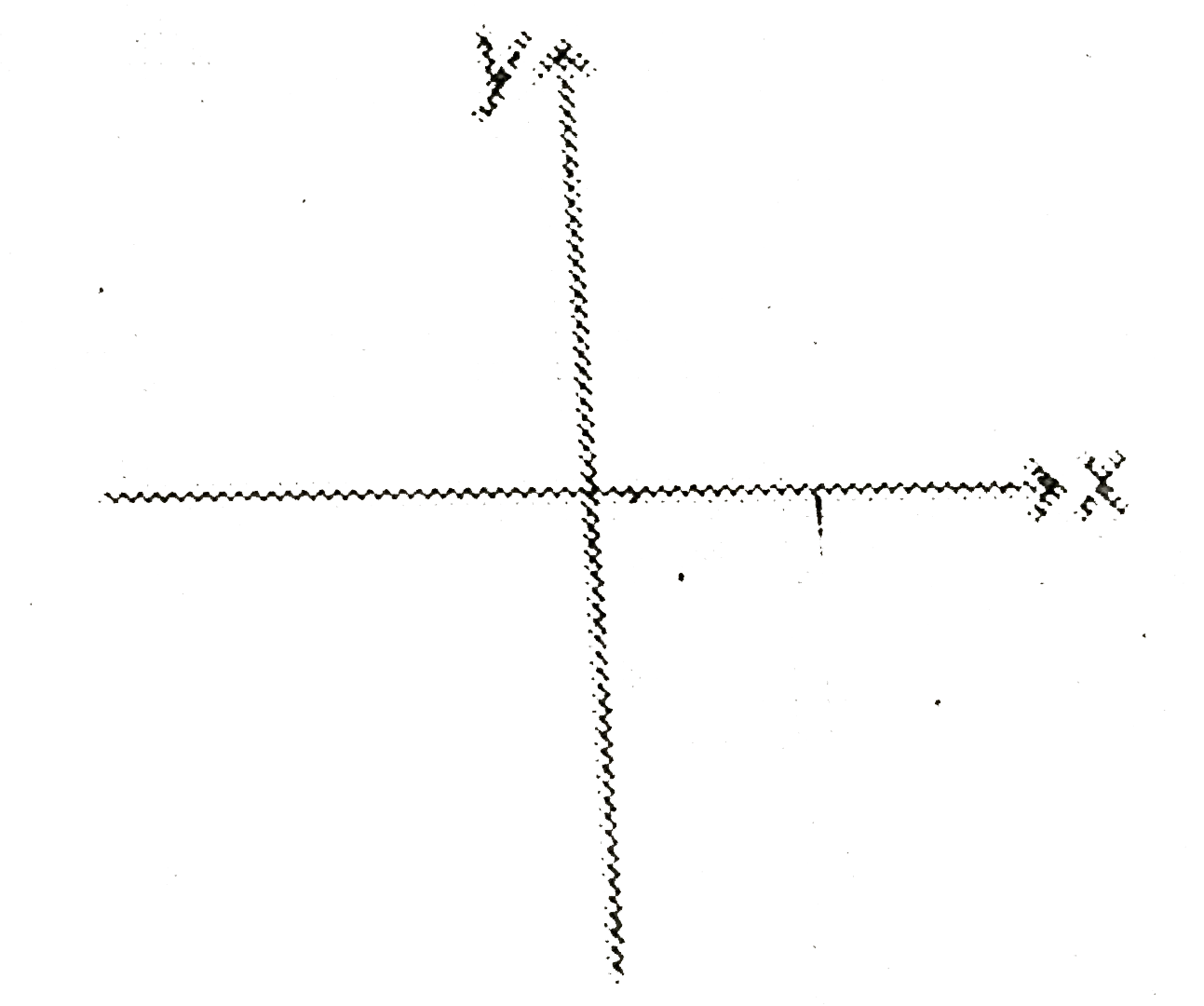A charged particle as deflected by two mutually perpendicular oscillation electrical field such that the displacement of the particle that in each one at then given by x=Asin(ωt)andy=Asin(ωt+π6) respectively. The frequency following by the changed particle is
a circle with equation x2+y2=A2
a straight line with equation y=√3a
an ellipse with equation x2+y2−xy=34A2
an ellipse with equation x2+y2−√3xy=14A2
The correct Answer is:D
When two SHM (which one perpendicular to end other ) are given by x=ωtandy=A2sin(ωt+δ) and when they are combirted the trangectory of the particle is given by
x2A21+y2A22−2xyA1A2cosδ=sin2δ
(This is equation of ellipse)
in the given equation , phase different is δ=π6 and A1=A2=A
∴x2A21+y2A22−2xyA1A2.√32=14
x2+y2−√3xy=14A2 and this in an elipse
Topper's Solved these Questions
- OSCILLATION AND SIMPLE HARMONIC MOTIONBook:A2ZChapter:OSCILLATION AND SIMPLE HARMONIC MOTIONExercise:Problems Based On Mixed Concepts
Explore 24 Videos
- OSCILLATION AND SIMPLE HARMONIC MOTIONBook:A2ZChapter:OSCILLATION AND SIMPLE HARMONIC MOTIONExercise:Assertion Reasoning
Explore 22 Videos
- OSCILLATION AND SIMPLE HARMONIC MOTIONBook:A2ZChapter:OSCILLATION AND SIMPLE HARMONIC MOTIONExercise:Simple Pendulum And Different Cases Of Shm
Explore 25 Videos
- NEWTONS LAWS OF MOTIONBook:A2ZChapter:NEWTONS LAWS OF MOTIONExercise:Chapter Test
Explore 30 Videos
- PROPERTIES OF MATTERBook:A2ZChapter:PROPERTIES OF MATTERExercise:Chapter Test
Explore 29 Videos
Similar Questions
Knowledge Check
A charged particle as deflected by two mutually perpendicular oscillation electrical field such that the displacement of the particle that in each one at then given by x=Asin(ωt)andy=Asin(ωt+π6) respectively. The frequency following by the changed particle is
Aa circle with equation x2+y2=A2Ba straight line with equation y=√3aCan ellipse with equation x2+y2−xy=34A2Dan ellipse with equation x2+y2−√3xy=14A2Electrons in an oscilloscope are deflected by two mutually perpendicular oscillating electric field such that at any time the displacement due to them are given by x=Acosωt, y=Asin(ωt+π6). Then the path of the electron is
Aa straight line having the equation x=yBa circle having the equationCan ellipse having the equation
x2−√3xy+y2=A24Dan ellipse having the equation
x2−xy+y2=3A24The displacemeent of a particle is given at time t by x=Asin(−2ωt)+Bsin2ωt. Then,
Athe motion of the particle is SHM with an amplitude of √A2+B24Bthe motion of the particle is not SHM, but oscillatory with a time period of T=πω.Cthe motion of the particle is oscillatory with a time period of T=π2ω.Dthe motion of the particle is a not periodic
Two simple harmonic motions given by, x=asin(ωt+δ) and y=asin(ωt+δ+π2) act on a particle will be
View SolutionThe displacement of a particle executing a S.H.M. is given by x= A "sin" ωt+Acosωt. What is the amplitude of motion ?
View SolutionA particle is subjected to two mutually perendicular simple harmonic motion such that its x and y coordinates are given by :
x=2sinω & y=2sin(ωt+π2)
The path of the particle will be
View SolutionThe displacement of a particle along the x- axis it given by x=asin2ωt The motion of the particle corresponds to
View SolutionA xandy co-ordinates of a particle are x=Asin(ωt)andy=Asin(ωt+π/2). Then, the motion of the particle is

View Solution

